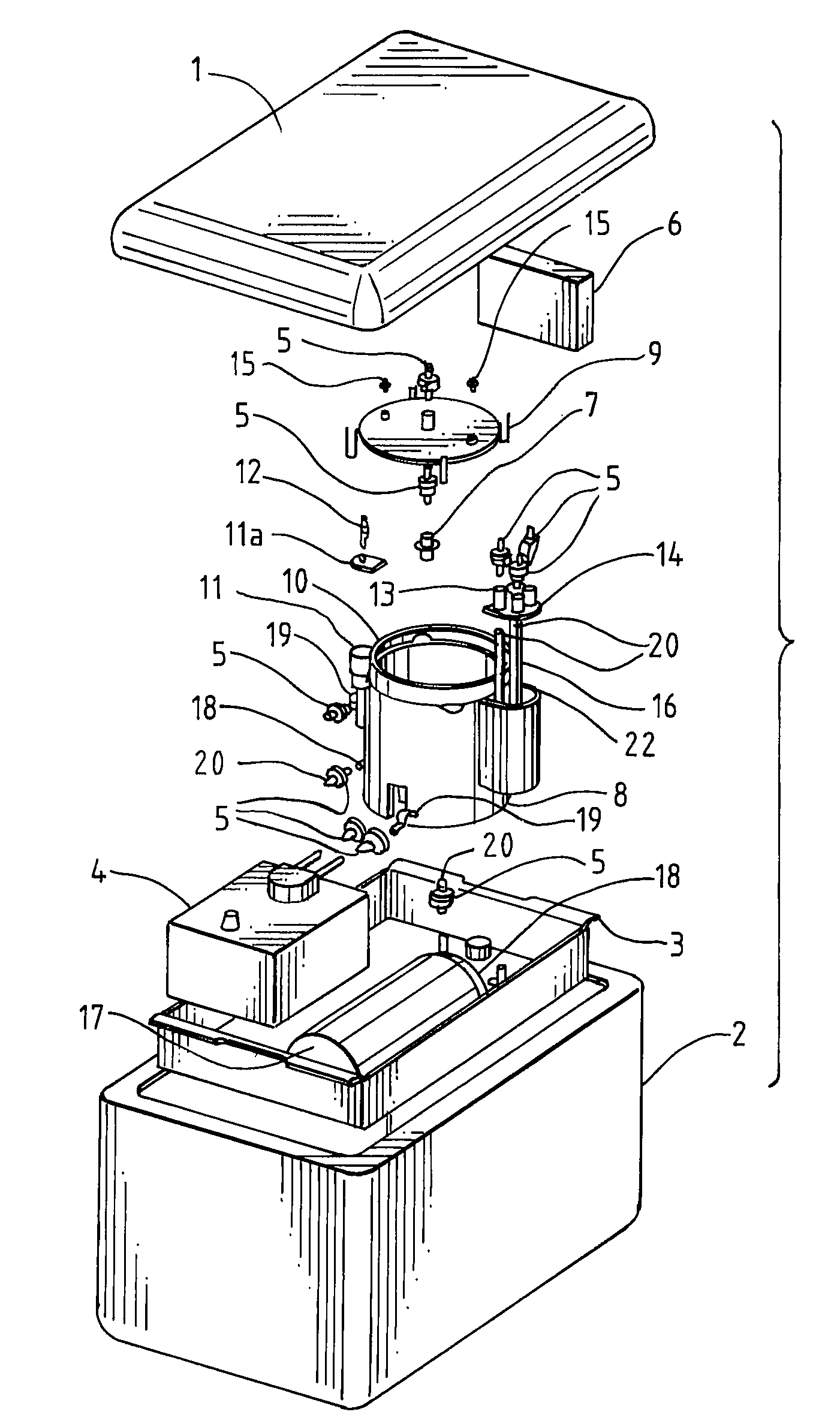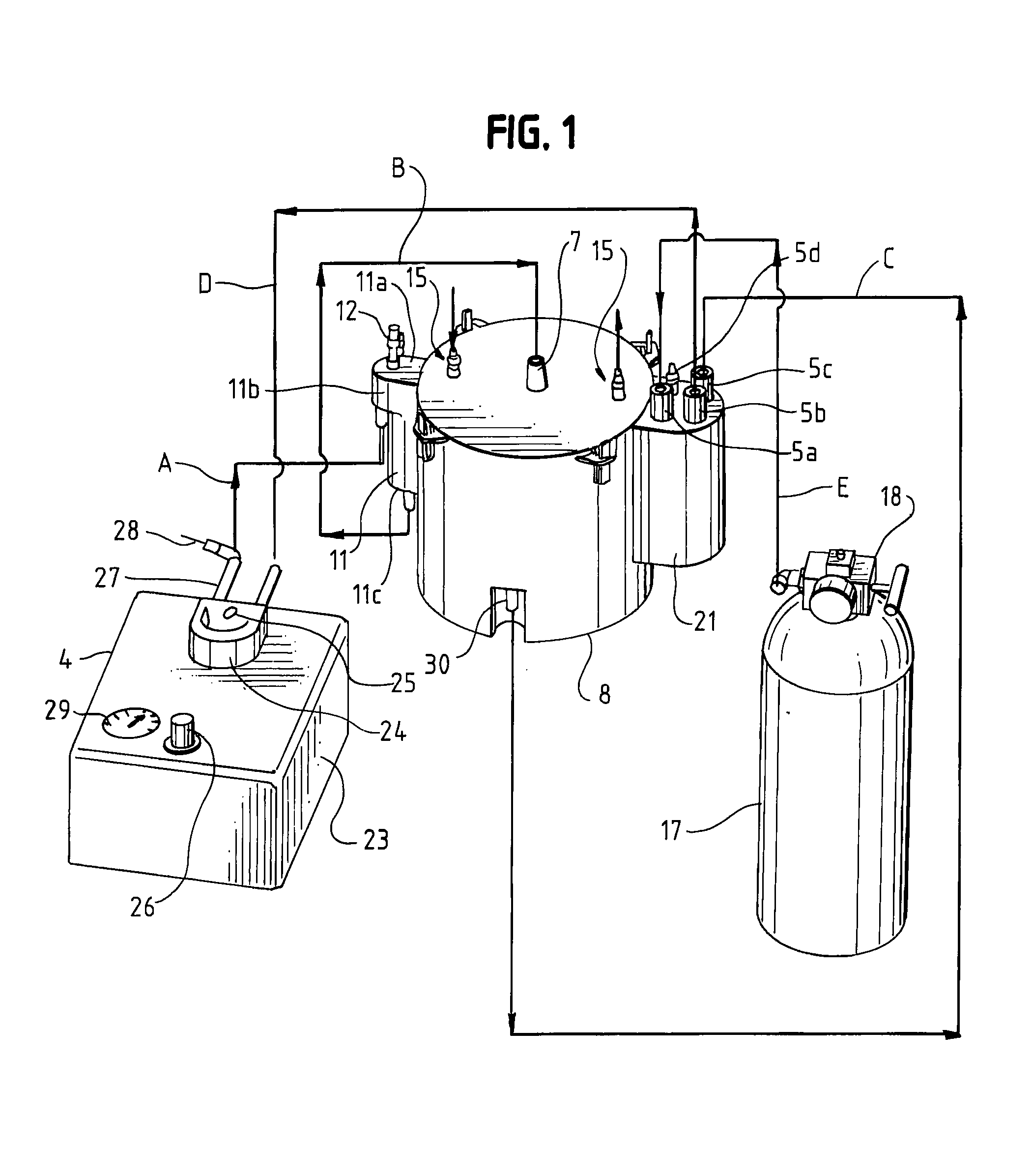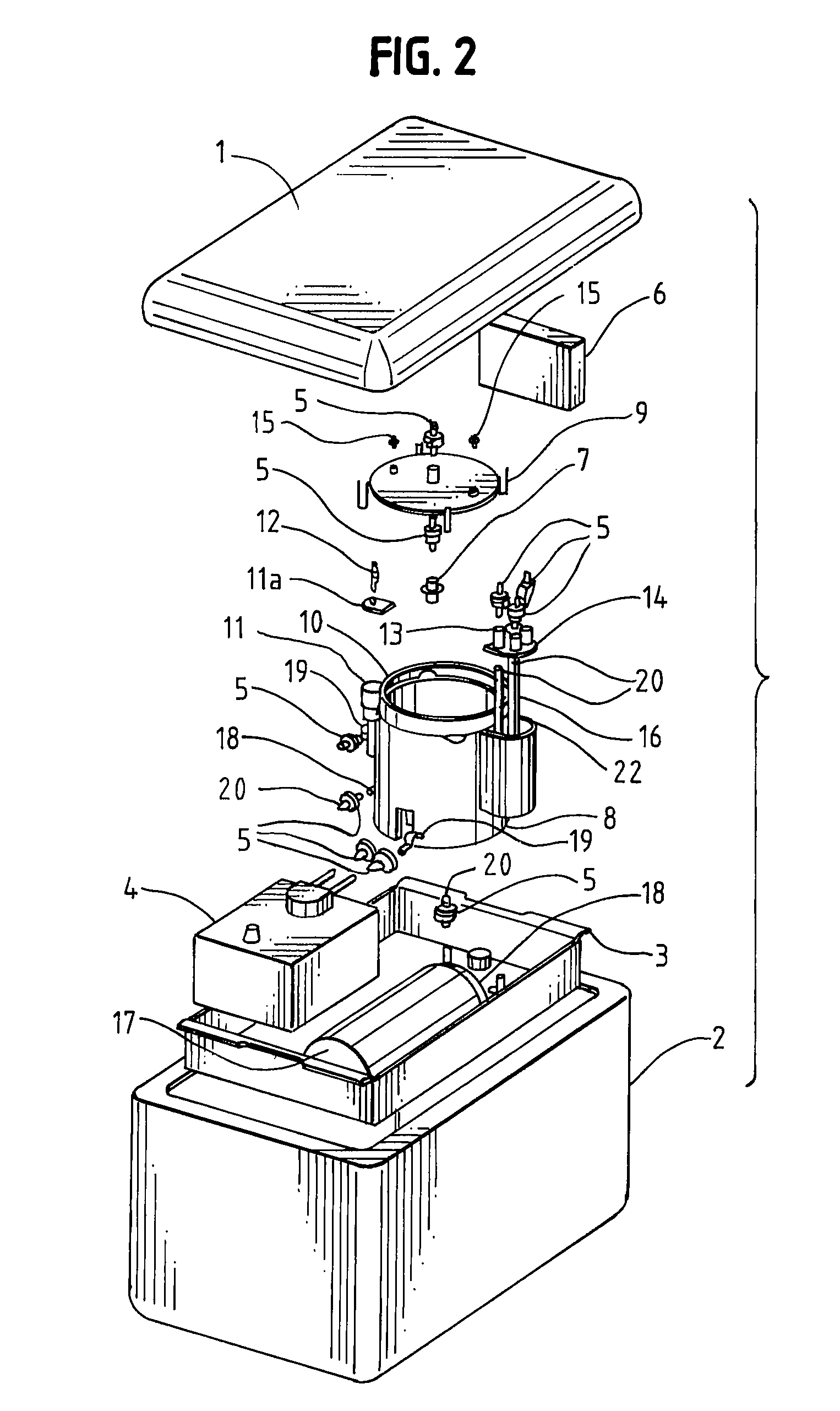Organ preservation apparatus and methods
a technology for organs and apparatuses, applied in the field of transportable organ preservation systems, can solve the problems of affecting the survival of animals, unable to truly independently function and be portable, and unable to maintain the quality and viability of organs at the cellular level, so as to maintain the viability of a human heart, remove bubbles, and maintain the quality of organs. the effect of quality and viability
- Summary
- Abstract
- Description
- Claims
- Application Information
AI Technical Summary
Benefits of technology
Problems solved by technology
Method used
Image
Examples
Embodiment Construction
[0039]As shown in FIG. 1, one embodiment of the perfusion apparatus of the present invention includes a compressed oxygen canister 17, an oxygenator chamber assembly 21, an organ container 8, an organ container lid 9, a bubble chamber 11, a pump assembly 4 and one or more cooling blocks or freezer packs 6.
[0040]The oxygen supply 17 is coupled to the oxygenator 21 through a pressure regulator 18. The oxygenator 21 is attached to the side of the reservoir or organ container 8. Similarly, the bubble chamber 11 is attached to the organ container 8 thus providing a compact assembly. The function and operation of the oxygenator 21 and the bubble chamber 11 will be described in more detail hereinafter.
[0041]As shown in FIG. 3, the organ container 8 together with the oxygenator assembly 21 and the bubble chamber 11 occupy approximately one third of a cooler 2 while the oxygen canister 17 together with the pump assembly 4 and cooling blocks 6 occupy the remainder of the cooler 2. The aforeme...
PUM
 Login to View More
Login to View More Abstract
Description
Claims
Application Information
 Login to View More
Login to View More - R&D
- Intellectual Property
- Life Sciences
- Materials
- Tech Scout
- Unparalleled Data Quality
- Higher Quality Content
- 60% Fewer Hallucinations
Browse by: Latest US Patents, China's latest patents, Technical Efficacy Thesaurus, Application Domain, Technology Topic, Popular Technical Reports.
© 2025 PatSnap. All rights reserved.Legal|Privacy policy|Modern Slavery Act Transparency Statement|Sitemap|About US| Contact US: help@patsnap.com



